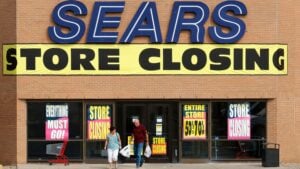
They say the day you sign a client is the day you start losing them.
Two great examples of this truism of recruiting are found in coaching a college football team and sponsoring a special purpose acquisition company (SPAC) deal.
What sports fans see on the field is just a tiny fraction of the effort behind the scenes of college football. Coaching, institutional knowledge, team building, game plays, health, fitness and all the rest. It’s not too much of a stretch to say 90% of the value of a football team is invisible to the untrained eye.
SPAC sponsors also do a lot of work behind the scenes, trying to frame the intangible assets of a target company in a clear and positive way to keep investors on board. The moment of sale (game day) is just the tip of the iceberg in the SPAC sponsor’s role.
The two disciplines of college football and SPACs can learn a lot from each other.
The 2021/22 college football season saw over 3000 players hit the transfer window. The new season’s transfer activity is already off to a furious start. After the portal opened on December 5, more than 1000 players have already put their names on the list. A similar flurry of activity is occurring in the world of SPACs. In 2022, more than 80 SPACs either liquidated or announced intentions to do so.
Recruiting is the lifeblood of college football. Unlike in the NFL, where each football team gets one first-round draft pick, one second-round pick and so on, college teams turn over about 25% of their roster every season. This means they need to find 20 new players annually, which is tough when the rest of college football is doing the same thing.
The University of Alabama’s Crimson Tide football team is coached by Nick Saban. The legendary coach has represented the gold standard for college football recruiting for the past 16 years. In what has become known as “The Process,” Saban targets the best players from across the country based on a finely tuned set of metrics for each team position and deploys his very own secret sauce to entice them to play on his Alabama team.
The results have been wildly successful. Saban has won 40% of all national championships since 2003 (he also won the 2003 championship while serving as the coach of Louisiana State University).
Saban described “The Process” in this way:
“We decided to use the approach that we are not going to focus on the outcome. We were just going to focus on the process of what it took to play the best football you could play — which was to focus on that particular play as if it had a history and life of its own.”
The average football play lasts only about seven seconds. Saban tells his players to focus not on winning the game, but on winning each block of seven seconds. By breaking a game down to its smallest parts, Saban’s strategy is to win more blocks of seven seconds than the opposition. Theoretically, the scoreboard should reflect that ratio.
So, what does this have to do with SPAC sponsorship?
The best coaches have a knack for recruiting the best players. But as with money, wealth is not what you earn, it’s what you can keep. The best college coaches know this and have a knack for also encouraging their biggest, strongest and fastest players to stay on the team during the dreaded “transfer portal.”
The transfer portal offers players a one-time chance to switch colleges without incurring the penalty of sitting out a year. The rules mean coaches are permanently in “sales mode,” spending their precious energy trying to dissuade the best players from chasing greener pastures.
SPAC sponsors have their own “transfer portal” for capital. Like the best college football players, investors may already be on board with the deal, but as a deadline looms, they sometimes get cold feet. Sponsors are therefore constantly re-selling the investors on the benefits of a deal rather than focusing on more important things. It can be a frustrating dynamic.
In an odd way, the market downturn of 2022 made the re-recruitment job a bit easier. While the S&P 500 fell about 19% over the calendar year, most SPAC stocks hovered near $10 per share and they became a port in the storm for nervous capital. This helped SPAC sponsors convince investors that now is a great time to put their money to work in a business.
But massaging the worries of skittish investors is never easy, which is why Saban’s “Process” is such a good strategy. It predicts that the best way to keep investors keen on a deal is for SPAC sponsors to focus on the “seven seconds” of due diligence as soon as a target is identified.
Once a combination agreement is in place, for example, sponsors must immediately dive in and get to know every aspect of the target business. This can’t be a simple box-checking exercise. It must be a thorough investigation of its assets and liabilities, its cost and profit centers and all the rest.
Breaking the company down into its constituent parts means giving special consideration to the target’s intangible assets – its brand, its networks of customers and suppliers, intellectual property, know-how and other types. Understanding these intangible assets are the only way to fully capture a company’s value and keep SPAC investors fully informed and engaged with the deal.
Done right, the due diligence process goes a long way to giving investors the comfort they seek that the deal is good and will perform well over the long term.
That’s why SPAC sponsors should study Saban’s “Process.”
Because, just like college football coaches, SPAC sponsors are also constantly wooing investors, while living in fear they might leave without warning. This makes re-recruiting the most daunting challenge facing SPACs today.
Sponsors can convince investors to stick around if they perform steady due diligence – winning each of Saban’s “seven seconds” – until the final whistle.
Originally published in DealFlow’s SPAC News
Recommended Reads
Free 1hr Consultation
Intangible assets are a company’s greatest source of hidden value and hidden risk. Make the valuable visible in your organisation.
Sign-up for a free 1-hour consultation today.




